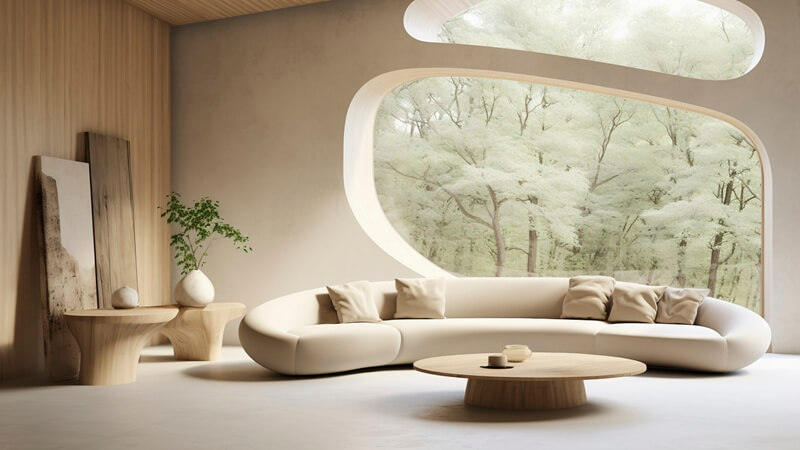Design trends often come and go, but some styles stand the test of time because they bring harmony, beauty, and function into everyday living. One such enduring style is the Japandi living room. This design movement merges the tranquil elegance of Japanese aesthetics with the cozy warmth of Scandinavian interiors. Together, they create a balanced environment that feels both serene and inviting.
In this guide, we’ll explore every aspect of creating a Japandi living room—its origins, design principles, color palette, furniture, decor, and practical steps for bringing it to life. Whether you’re decorating from scratch or refining your current space, this guide will provide a detailed roadmap to transform your living room into a sanctuary of calm and style.
What is a Japandi Living Room?
The Japandi style is a hybrid interior design trend that blends:
-
Japanese minimalism: Rooted in Zen philosophy, it emphasizes simplicity, functionality, and a connection with nature.
-
Scandinavian hygge: Known for its warmth and coziness, it focuses on light-filled spaces, soft textures, and practicality.
When these two worlds come together, they form the Japandi living room—a space that is clutter-free, thoughtfully designed, and filled with natural beauty. This fusion encourages intentional living where every piece serves a purpose, and comfort never compromises style.
Core Japandi Design Principles
To create an authentic Japandi living room, it’s important to understand the core design principles.
1. Embrace Minimalism
-
Focus on clean lines and uncluttered spaces.
-
Remove unnecessary decor and emphasize functional furniture.
-
Minimalism in Japandi doesn’t mean emptiness—it means intentional choices.
2. Mix and Match Textures
-
Pair smooth woods with tactile materials like jute rugs or wool throws.
-
Contrast polished finishes with handcrafted, rustic accessories.
-
The variety of textures adds depth while maintaining simplicity.
3. Balance Japanese and Scandinavian Elements
-
Japanese design: darker woods, low furniture, sleek lines.
-
Scandinavian design: lighter woods, soft furnishings, and coziness.
-
A Japandi living room blends both, such as pairing a low dark wood coffee table with a light linen sofa.
4. Incorporate Nature
-
Introduce plants like bonsai trees, ferns, or olive branches.
-
Use natural materials like bamboo, stone, and organic fabrics.
-
Large windows and natural light enhance the connection with the outdoors.
5. Focus on Craftsmanship
-
Choose handcrafted furniture over mass-produced items.
-
Support artisans who create timeless, durable pieces.
-
Quality is always prioritized over quantity.
Japandi Color Palette
The color scheme in a Japandi living room is rooted in calming, earthy tones.
-
Core neutrals: Off-whites, beiges, and soft taupe create a warm backdrop.
-
Contrasting neutrals: Black, charcoal gray, and deep browns add grounding and drama.
-
Muted accents: Soft greens, dusty pinks, or pale blues used sparingly bring a subtle touch of personality.
The result is a soothing and balanced palette that reflects nature and promotes relaxation.
Furniture Essentials for a Japandi Living Room
Choosing the right furniture is central to achieving the Japandi style.
Sofas
-
Opt for low-profile sofas with natural fabrics like linen or cotton.
-
Neutral upholstery ensures longevity and versatility.
-
Example: IKEA STOCKHOLM sofa in neutral tones.
Coffee Tables
-
Look for simple wooden coffee tables with beautiful craftsmanship.
-
Rounded edges or organic shapes are often preferred.
-
Examples: CondeHouse CRUST Coffee Table or Mater Accent Oval Lounge Table.
Seating
-
Add an armchair with clean lines or a minimalist wooden bench.
-
Floor cushions inspired by Japanese interiors can also enhance the look.
Storage Solutions
-
Keep storage practical and hidden when possible.
-
Open shelving made of light wood creates a sense of openness.
-
Example: IKEA NORDKISA open wardrobe used as a versatile shelving unit.
Decor and Accessories
The magic of Japandi lies in its careful selection of accessories.
Textiles
-
Layer natural rugs like jute with wool throws or linen cushions.
-
Keep patterns subtle—think stripes or soft geometric shapes.
Ceramics and Pottery
-
Handcrafted vases, bowls, and ceramic mugs double as art and function.
-
Mix Japanese pottery with Scandinavian ceramic designs for authenticity.
Lighting
-
Use warm, diffused lighting to create a cozy atmosphere.
-
Pendant paper lanterns, minimalist floor lamps, or organic-shaped sconces are ideal.
-
Example: IKEA TÄLLBYN pendant lamp.
Greenery
-
Plants act as living decor, reflecting the connection with nature.
-
A bonsai, snake plant, or fiddle leaf fig tree enhances the balance of the room.
Wall Art
-
Keep wall art minimal—black-and-white photography, abstract prints, or hand-drawn sketches.
-
Large statement pieces work better than cluttered gallery walls.
Step-by-Step Guide to Creating a Japandi Living Room
Step 1: Declutter and Simplify
-
Start by removing unnecessary decor.
-
Keep only items that are functional or meaningful.
Step 2: Establish a Neutral Base
-
Paint walls in warm neutrals like beige or soft gray.
-
Use light wood flooring or rugs to define the space.
Step 3: Select Functional Furniture
-
Choose simple, low, and functional pieces.
-
Ensure every piece complements the overall design.
Step 4: Layer with Textures
-
Add warmth through throws, cushions, and rugs.
-
Combine smooth, rough, and soft materials for depth.
Step 5: Add Natural Elements
-
Place indoor plants strategically.
-
Use wooden trays, bamboo blinds, or stoneware.
Step 6: Illuminate with Warm Lighting
-
Install dimmable lights for flexibility.
-
Use floor lamps or pendant lights with soft bulbs.
Step 7: Personalize with Subtle Decor
-
Incorporate a few personal touches like a handcrafted vase or framed sketch.
-
Remember: less is more.
Practical Tips for Maintaining a Japandi Living Room
-
Regular decluttering: Keep the space intentional.
-
Mindful shopping: Invest in quality rather than buying trends.
-
Natural care: Use eco-friendly cleaning methods to maintain natural materials.
-
Adapt to seasons: Swap light throws in summer with heavier woolen textures in winter.
Why Choose Japandi for Your Living Room?
A Japandi living room is more than a design style—it’s a lifestyle choice. It encourages mindfulness, intentionality, and balance in everyday living. By blending the sleek minimalism of Japanese design with the cozy warmth of Scandinavian interiors, you create a timeless space that fosters both relaxation and connection.
Quick Reference Table
| Element | Japandi Approach |
|---|---|
| Style Philosophy | Minimalism with warmth and intentional living |
| Colors | Warm neutrals, earthy tones, muted accents |
| Materials | Wood, stone, bamboo, linen, cotton, ceramics |
| Furniture | Low-profile, handcrafted, functional |
| Lighting | Warm, diffused, natural-inspired |
| Decor | Minimal, handcrafted, nature-inspired |
| Nature | Indoor plants, bonsai, greenery, natural textures |
Conclusion
Designing a Japandi living room is about finding balance—between light and dark, soft and strong, minimal and cozy. By embracing simplicity, prioritizing craftsmanship, and staying close to nature, you can create a space that feels timeless, calming, and deeply personal.
The beauty of Japandi lies in its adaptability. Whether your space is large or small, urban or rural, this design philosophy ensures harmony and comfort. With thoughtful choices in furniture, decor, and color, your living room can become more than a space—it can be a sanctuary.
For more info visit Stylishhome

